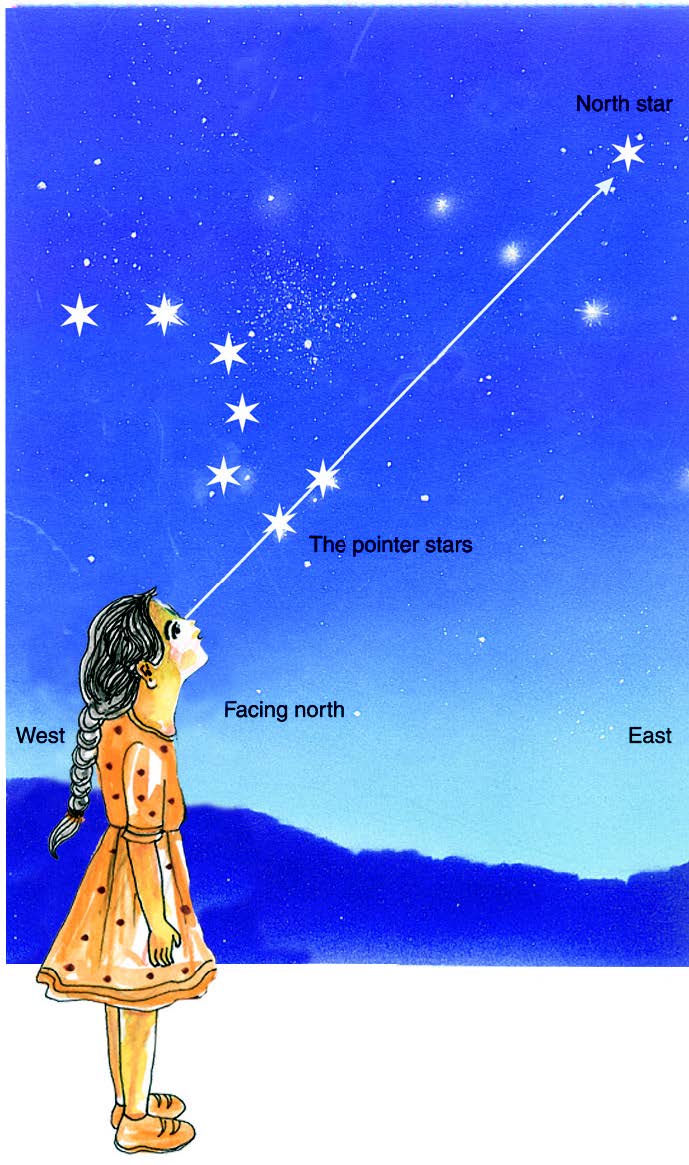Class 6 Geography The Earth in the Solar System chapter 1 notes NCERT Solution in Hindi. NCERT Class 6 Geography Notes, Textual Question Answer and Important Question Answer also Available for Various Board Students like HBSE, CBSE, UP board, Mp Board, RBSE and some other State Boards.
Also Read:- Class 6 Geography NCERT Solution
NCERT Solution for Class 6 Geography Chapter 1 The Earth in the Solar System Notes for students.
The Earth in the Solar System Class 6 Geography Chapter 1 Notes
- Celestial bodies – The sun, the moon and all those shining objects in the night sky are called celestial bodies.
- Stars – Those celestial bodies that are very big and hot and are made up of gases. They have their own heat and energy. eg. Sun is a star, and other starts that we see in night. Stars are too far from us. we can’t reach on stars.
- The Solar System :- It is made up of the Sun, eight planets , asteroids and meteoroids.
- Distance of planets from the Sun is as :- Mercury > Venus > Earth > Mars > Jupiter > Saturn > Uranus > Neptune
- Size of planets in descending order is as :- Jupiter > Saturn > Uranus > Neptune > Earth > Mars > Venus > Mercury.

- North Star determines north direction. it always indicates North pole because it always remains in same direction. it is also known as Pole Star.

- All the eight planets of the solar system move around the sun in fixed paths. These paths are elongated. They are called orbits.
- Venus is called “Earth’s Twin“.
- All the planets movers around the sun in a Elliptical path.
- Constellations :- Various patterns formed by the different groups of stars is called constellations. eg. Ursa Major and Saptarishi etc.
- The Earth :- It is Geoid ( Slightly flattened at the poles ) in shape. It is third nearest to the sun and fifth largest planet of the solar system. Earth is also known as Blue Planet. Conditions favorable to support life are mainly found on the earth.
- All planets revolves around the sun . Same as planets, all natural Satellites revolves around their respective planets.
- The Moon :- It is a natural satellite of earth. Its diameter is one-fourth that of earth. It completes one revolution around earth in 27 days. Moon is about 3,84,400 Km away from us. Neil Armstrong was the first man to step on surface of moon on 29th July 1969. The full moon night is called Poornima and when there is no moon in the sky is called Amavasya or New moon Night.
- Satellite is also a celestial body that moves around the planets in the same way as the planets move around the sun. Satellites are two different types :-
- Natural Satellite
- Human-made Satellite ( Artificial Satellite )
- Asteroids :- The tiny bodies which moves around the sun and are found between the orbits of Mars and Jupiter are called Asteroids. Largest asteroid is Ceres.
- Meteoroids :- The small pieces of rocks which move around the sun are called meteoroids.
- Galaxy is a huge system of billions of stars and cloud dust and gases. In Ancient India galaxy is named as Akash Ganga. For your Understanding – mostly all the stars that we see in the sky are a part of milky way galaxy ( that’s our Galaxy )
- We are a part of Earth. Earth is a part of Solar System. Solar System is a part of Milky way Galaxy and galaxy is a part of Universe. Therefore correct order in descending order will be:- The Universe > Milky Way Galaxy > Solar System > Earth > we.